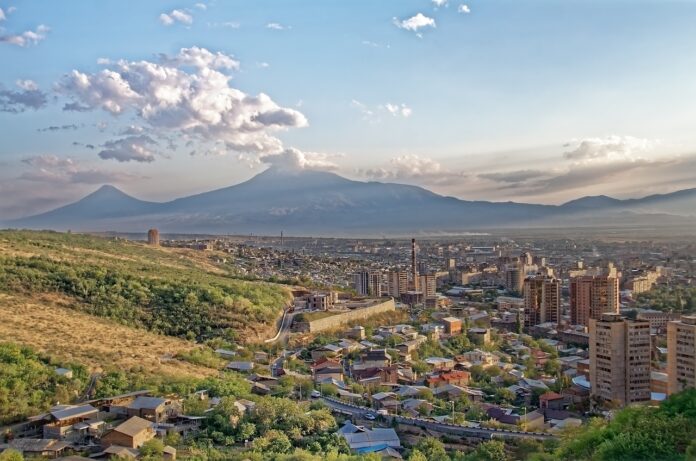20 Interesting Facts about Armenia
- Location and Borders: Armenia is located in the South Caucasus region of Eurasia, at the crossroads of Eastern Europe and Western Asia. It is bordered by Turkey to the west, Georgia to the north, Azerbaijan to the east, and Iran to the south.
- Square: The country covers an area of approximately 29,743 square kilometers.
- National Currency: The currency of Armenia is the Armenian Dram (AMD).
Interesting Facts about Armenia:
- First Christian Nation: Armenia was the first country in the world to officially recognize Christianity as the state religion in 301 AD. This pivotal event has profoundly shaped Armenian culture and identity.
- Oldest Winery: The oldest known winery in the world was discovered in a cave near the village of Areni, dating back to around 4100 BC, demonstrating Armenia’s ancient tradition of winemaking.
- Ancient Nation: Armenia is one of the oldest countries in the world, with mentions in historical records such as the Behistun Inscription of King Darius I in 520 BC.
- Echmiadzin Cathedral: The Echmiadzin Cathedral, built in 303 AD, is the oldest state-built church in the world, marking Armenia’s early adoption of Christianity.
- Ancient City of Yerevan: The capital city, Yerevan, founded in 782 BC by King Argishti I, is one of the oldest continuously inhabited cities in the world, even older than Rome.
- Armenian Alphabet: Created by the scholar Mesrop Mashtots in 405-406 AD, the Armenian alphabet is one of the oldest in the world and has remained largely unchanged for over 1600 years.
- David the Invincible: In the 6th century, Armenian scholar David Anhaght (David the Invincible) created the first known textbook of arithmetic problems. A copy of this textbook is still preserved in the Matenadaran in Yerevan.
- Oldest Leather Shoe: The oldest known leather shoe, dating back to around 3500 BC, was discovered in a cave near Areni.
- Apricot Homeland: Armenia is considered the homeland of the apricot. Historical evidence suggests that apricots were introduced to Europe from Armenia. The most famous Armenian musical instrument, the “duduk,” is made from apricot wood.
- Mount Ararat: The biblical Mount Ararat, considered a national symbol of Armenia, is currently located in Turkey but has been a part of Armenian heritage for millennia.
- Armenian Diaspora: The Armenian diaspora is one of the largest in the world, with around 11-13 million Armenians living outside Armenia. The largest communities are in Russia (over 2.5 million), the United States (over 1.2 million), and France (over 0.6 million).
- Lavash Bread: Armenian lavash is well-known worldwide and was inscribed in the UNESCO Intangible Cultural Heritage list in 2014.
- Armenian Brandy: Armenian brandy is a national symbol. The famous British Prime Minister Winston Churchill drank a bottle of Armenian brandy “Dvin” (50 degrees) every day. Brandy production in Armenia began in 1887, started by Nerses Tairyan.
- Unique Script: The Armenian alphabet consists of 39 unique letters. Its creation was a monumental cultural milestone, enabling the translation of the Bible and other important texts into Armenian.
- Lake Sevan: Lake Sevan, one of the largest freshwater high-altitude lakes in the world, is located in Armenia. It is a popular destination for both locals and tourists.
- Khachkars: Armenia is renowned for its khachkars, intricately carved cross-stones that are a distinctive feature of Armenian art and religious expression. Many khachkars are listed as UNESCO World Heritage sites.
- Armenian Genocide Memorial: The Armenian Genocide Memorial in Yerevan commemorates the 1.5 million Armenians who perished during the genocide perpetrated by the Ottoman Empire during World War I.
- Chess: Chess is a national pastime in Armenia, and the country has produced many world-class chess players. The government even includes chess in the school curriculum.
- Silk Road: Armenia was a significant hub on the ancient Silk Road, facilitating cultural and economic exchanges between the East and the West.
- UNESCO World Heritage Sites: Armenia is home to several UNESCO World Heritage sites, including the Monasteries of Haghpat and Sanahin, the Cathedral and Churches of Echmiadzin, and the archaeological site of Zvartnots.
